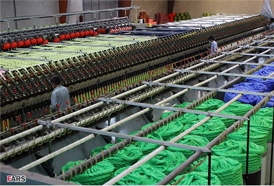Iranian Scientists Use Clay Nanoparticles to Produce Dyeable Polypropylene Fibers
Iranian researchers from Amir Kabir University of Technology produced dyeable polypropylene fibers by using clay nanoparticles.
The study was carried out in a joint industrial plan between Petrochemistry Research and Technology Company and Amir Kabir University of Technology.

Despite the unique properties of polypropylene fibers, there are some disadvantages in the structure of polypropylene, which make impossible the use of this polymer in all aspects. Polypropylene fibers and strings are not dyeable by using the common methods in textile industry. At present, mass coloration is the only method to dye polypropylene fibers.
The production of dyeable polypropylene fibers by using pigments has become a challenge in polymer and textile industries in recent decades. Various approaches have so far been investigated to resolve this problem, including the use of alloys, copolymers and preparation with plasma. However, one of the newest approaches is the mixing of polypropylene with suitable organic or inorganic nanoparticles. The nanoparticles are put into the matrix of the polypropylene when they are molten. It is expected that they create passages for the passing of pigment and also create spaces in order to adsorb the bulk polymer.
This research studied the dyeability modification of polypropylene fibers through molten mixing of clay nanoparticles. Polypropylene grafted with maleic anhydride (PP-g-MA) was used as the compatibility agent to obtain compatible polymeric characteristics.
Source: Nanotechnology Now
- 255 reads




